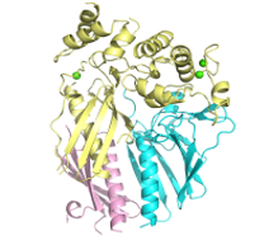03.13.2018// Zongchao Jia, Department of Biomedical and Molecular Sciences, Queen's University3/8/2018
Structure-based inhibitor targeting Type II secretion system of Pseudomonas aeruginosa Pseudomonas aeruginosa is an opportunistic Gram-negative pathogen. As one of the most predominant nosocomial pathogens, it tends to preferentially colonize immunocompromised patients such as those with cystic fibrosis, cancer, or AIDS. It can also cause pneumonia, urinary tract infections, and gastrointestinal infections. Clinically, P. aeruginosa is particularly difficult to treat. With the increasing incidence of antibiotic-resistant P. aeruginosa infections, in 2017 World Health Organization declared this bacterium a “Priority 1” pathogen that is in urgent need of new antibiotics. Pseudomonas aeruginosa utilizes Type II secretion system (T2SS) to translocate protein virulence factors and facilitate infection in the host. We have solved three-dimensional structures of T2SS core complexes and designed structure-based inhibitors to target the protein-protein interaction interface of the T2SS core complex. The inhibitors not only disrupted the complexes in vitro, but also inhibited the secretion of T2SS substrates in P. aeruginosa. Most importantly, they also attenuated Pseudomonas aeruginosa infection in the animal model of Caenorhabditis elegans. Our work represents the first demonstration of successful T2SS inhibition in any bacterium. 11:30-12:30 BioSci Rm. 3110
|
Archives
February 2021
|

